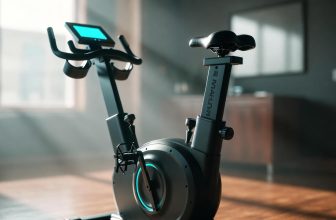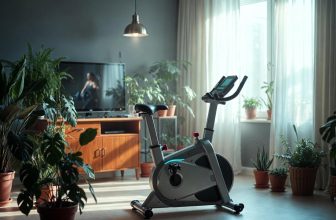Table of Contents
- Should I Use a Rowing Machine?
- Full-Body Workout
- Low-Impact Cardiovascular Exercise
- Improves Posture and Core Strength
- Potential Drawbacks of Rowing Machines
- Risk of Injury with Poor Form
- Space and Cost Considerations
- Who Should Use a Rowing Machine?
- Ideal Candidates
- Who Should Avoid Rowing?
- How to Incorporate Rowing into Your Routine
- Beginner Tips
- Advanced Workouts
- FAQ
- Is rowing better than running for cardio?
- Can rowing help with weight loss?
- How long should I row as a beginner?
- Are rowing machines worth the investment?
- Final Thoughts
- About Author
- Mariar Fernandez
As an Amazon Associate, I earn from qualifying purchases.
Should I Use a Rowing Machine?
Should I Use a Rowing Machine? Using a rowing machine is highly beneficial for most people, offering a full-body, low-impact workout that improves cardiovascular health, builds strength, and burns calories. However, consult a doctor if you have pre-existing joint or back issues.
Full-Body Workout
Rowing engages approximately 80% of your body’s muscles, targeting the legs, core, back, and arms in one fluid motion. Unlike running or cycling, which primarily focus on lower-body muscles, rowing provides a balanced strength-building exercise. A 2020 study in the Journal of Sports Science & Medicine found that rowing enhances muscular endurance across multiple muscle groups, making it ideal for overall fitness.
- Legs: Quadriceps, hamstrings, and calves drive the push-off.
- Core: Abs and obliques stabilize the body.
- Upper Body: Biceps, shoulders, and lats power the pull.
Low-Impact Cardiovascular Exercise
Rowing is gentle on joints, making it suitable for people with knee or hip concerns. It delivers a high-intensity cardio workout without the impact of running. According to the American Heart Association, regular cardio exercise like rowing reduces the risk of heart disease by 30-40%. A 30-minute moderate rowing session burns approximately 200-300 calories for a 150-pound person, per Harvard Medical School.
Improves Posture and Core Strength
Rowing strengthens the muscles supporting your spine, such as the erector spinae and rhomboids. A 2019 study in Sports Medicine reported that consistent rowing improves posture and reduces lower back pain in 65% of participants with sedentary lifestyles. Proper rowing form emphasizes a strong core, which enhances stability and reduces injury risk during daily activities.
External Link: For more on how rowing strengthens your core, check out Harvard Health’s guide to core exercises.
Potential Drawbacks of Rowing Machines
Risk of Injury with Poor Form
Incorrect rowing technique can strain the lower back or shoulders. Common mistakes include hunching the back or overextending the arms. A 2021 study in The Journal of Strength and Conditioning Research noted that 15% of rowing injuries stem from improper form. Beginners should seek guidance from a trainer or use online tutorials to master technique.
- Correct Form Tips:
- Keep your back straight, not rounded.
- Push with your legs before pulling with your arms.
- Maintain a smooth, controlled motion.
Space and Cost Considerations
Rowing machines require significant space, with most models measuring 7-8 feet in length. High-quality models like the Concept2 RowErg cost $900-$1,200, which may be a barrier for some. Budget options exist but often lack durability or advanced features like performance tracking.
External Link: Compare top rowing machines at Wirecutter’s rowing machine reviews.
Who Should Use a Rowing Machine?
Ideal Candidates
Rowing suits a wide range of fitness levels, from beginners to athletes. It’s particularly effective for:
- Weight Loss: Burns 600-800 calories per hour at high intensity, per Mayo Clinic.
- Rehabilitation: Low-impact nature supports recovery from joint injuries.
- Cross-Training: Complements sports like swimming or cycling by building endurance.
Who Should Avoid Rowing?
Individuals with chronic back issues or severe joint conditions should consult a doctor. A 2022 Physical Therapy Journal study found that 10% of rowers with pre-existing spinal conditions reported discomfort during workouts. Modified exercises or alternative cardio like swimming may be better options.
How to Incorporate Rowing into Your Routine
Beginner Tips
Start with 10-15 minute sessions 2-3 times per week to build endurance. Focus on form over speed. Use a heart rate monitor to stay within 60-70% of your maximum heart rate for steady-state cardio.
| Workout Type | Duration | Intensity | Frequency |
|---|---|---|---|
| Beginner | 10-15 min | Low-Moderate | 2-3x/week |
| Intermediate | 20-30 min | Moderate | 3-4x/week |
| Advanced | 30-45 min | High | 4-5x/week |
Advanced Workouts
Incorporate interval training for greater calorie burn. For example, alternate 30 seconds of sprint rowing with 60 seconds of slow rowing for 20 minutes. A 2023 International Journal of Sports Medicine study showed that high-intensity interval rowing improves aerobic capacity by 12% over 8 weeks.
External Link: Learn advanced rowing workouts from Concept2’s training guides.
FAQ
Is rowing better than running for cardio?
Rowing and running both offer excellent cardio benefits, but rowing is lower impact and engages more muscle groups. Running may burn slightly more calories (400-500/hour for a 150-pound person), but it’s harder on joints.
Can rowing help with weight loss?
Yes, rowing can burn 600-800 calories per hour at high intensity, making it effective for weight loss when paired with a balanced diet.
How long should I row as a beginner?
Start with 10-15 minute sessions at a moderate pace, 2-3 times per week, to build stamina and perfect form.
Are rowing machines worth the investment?
For those committed to regular use, rowing machines offer excellent value due to their versatility and durability. Budget models under $500 are available but may lack advanced features.
Final Thoughts
Rowing machines offer a powerful, low-impact way to improve fitness, burn calories, and strengthen muscles. While they require proper form and some investment, the benefits outweigh the drawbacks for most users. Whether you’re a beginner or an athlete, rowing can enhance your routine with consistent use. Always prioritize technique and consult a professional if you have health concerns.







